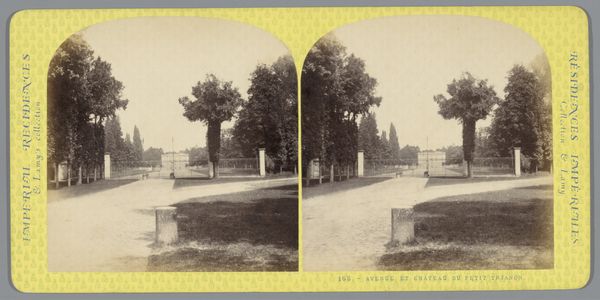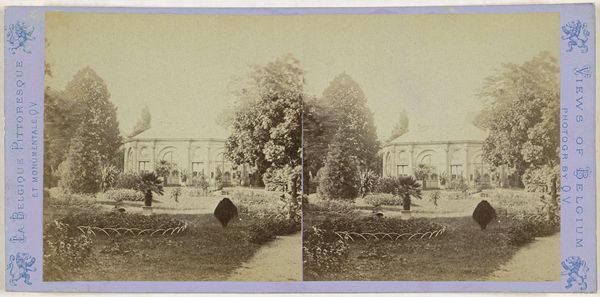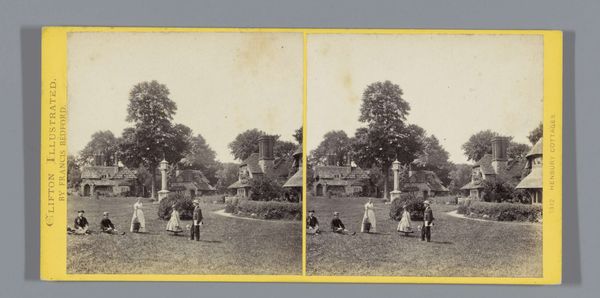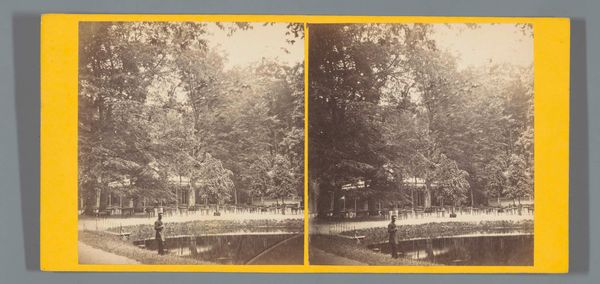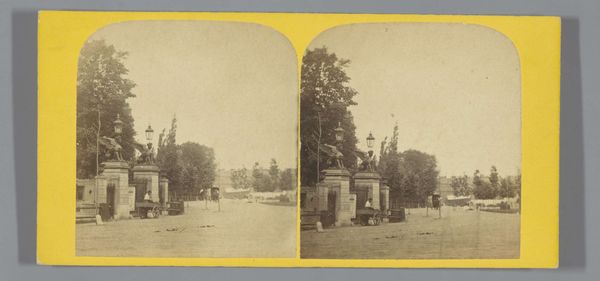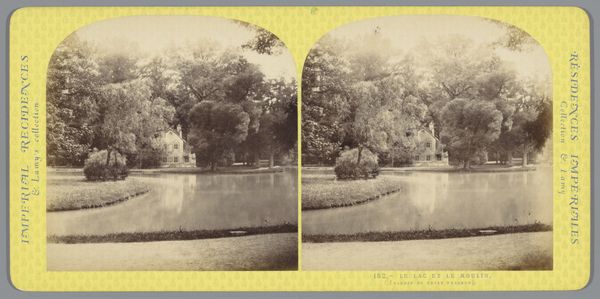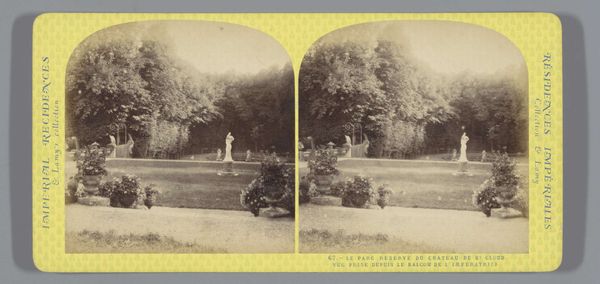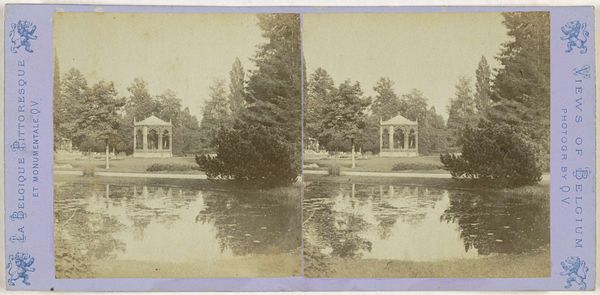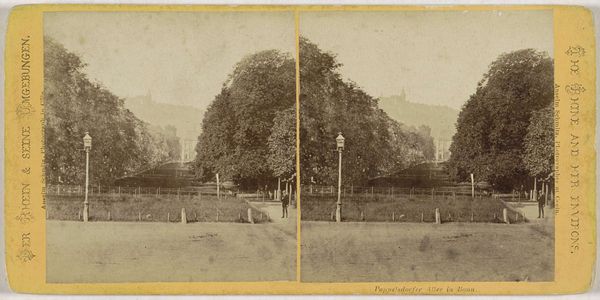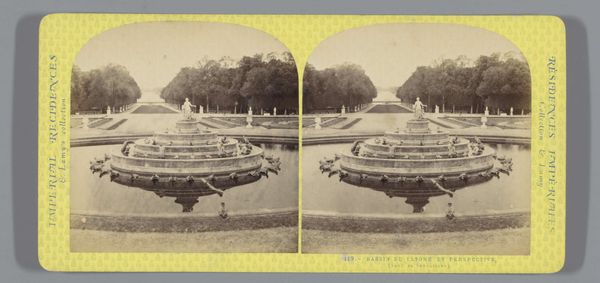
Dimensions: height 85 mm, width 170 mm
Copyright: Rijks Museum: Open Domain
Curator: Here we have an albumen print, a photograph titled "Gezicht op een vijver in het Parc de Saint-Cloud," which translates to "View of a Pond in the Parc de Saint-Cloud," created before 1870 by Ernest Eléonor Pierre Lamy. Editor: It's kind of dreamlike, isn’t it? That hazy focus, the way the trees billow like soft explosions. It feels so romanticized, like stepping into a memory. A little sad, too, almost… faded. Curator: That dreamy quality probably has a lot to do with the albumen printing process, which was incredibly popular at the time. But more than that, I see it as reflecting a deliberate artistic choice, influenced by the romantic sensibilities of the period. Photography was striving to be more than just documentation, but something closer to painting. Editor: Absolutely! It feels constructed in a way—the symmetry, the carefully placed statues… Did these parks always look this manicured? Curator: Royal parks were absolutely statements of power. This would have been during the Second Empire under Napoleon III, a time when Paris was being radically reshaped. Parks like Saint-Cloud weren't just for leisure; they were stages for projecting imperial grandeur, part of an ambitious public works agenda to legitimize the regime. Editor: It’s amazing to think how landscapes, even seemingly natural ones, can be loaded with political intention. You know, looking at the composition, the placement of those fountains feels really strategic, like they’re echoing some unseen pattern or order. What do you think that symbolism adds? Curator: Water features in such settings traditionally symbolized wealth, control over nature, even imperial reach. That perfect pond reflected a kind of controlled abundance – a very carefully cultivated fantasy, of course. Editor: I see what you mean! It all contributes to that underlying tension, that hint of sadness I picked up on initially. It's gorgeous, yet knowing the context casts a slightly melancholic shade on it. It's interesting how photographic nostalgia does that. Curator: Exactly, seeing these images now is more than viewing a snapshot; we’re confronting how imperial power molded its image, and its legacy as a romanticized picture of perfect control. Editor: It makes you wonder about the photographer, too. What were Lamy’s feelings about capturing it? Did he know he was recording this fabricated ideal that, perhaps even then, was a little hollow at the center? Fascinating, this park.
Comments
No comments
Be the first to comment and join the conversation on the ultimate creative platform.


